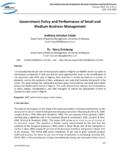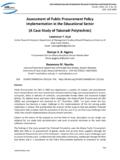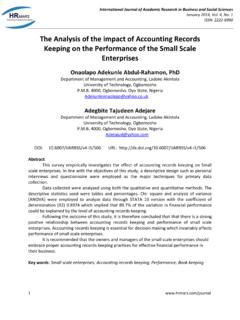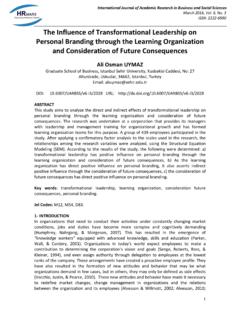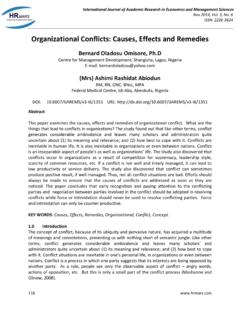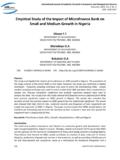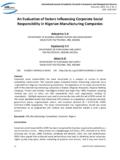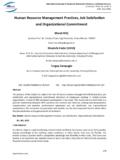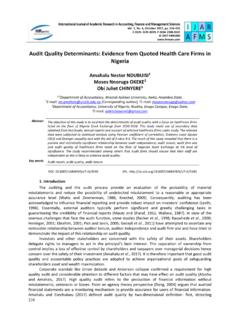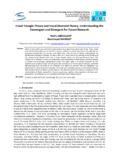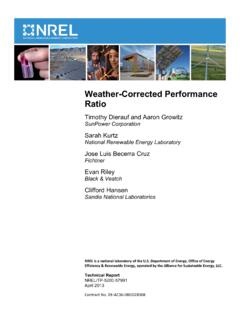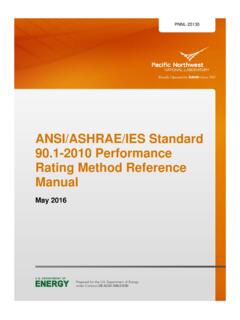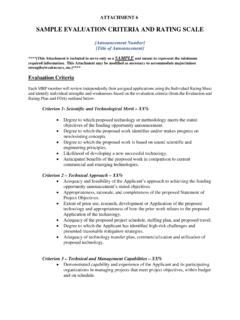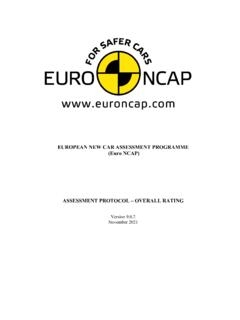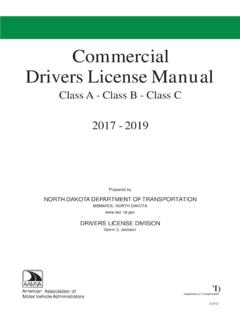Transcription of Financial Factors Influencing Performance of Savings and ...
1 291 International Journal of Academic Research in Accounting, Finance and Management Sciences Vol. 4, , April 2014, pp. 291 302 E-ISSN: 2225-8329, P-ISSN: 2308-0337 2014 HRMARS Financial Factors Influencing Performance of Savings and Credit Co-Operative Organization in Kenya Jeremiah Mugo KARAGU1 Bichanga OKIBO2 1,2 Jomo Kenyatta University of Agriculture and Technology 1E-mail: (Corresponding author) Abstract This study was geared towards finding the Financial Factors Influencing Performance of SACCOs in Kenya. As a result the study found that funds misappropriation influences Performance of Sacco s. The study concluded that Sacco s need to improve on their internal audit department and other internal control measures. It also established that investment decisions made by Sacco s influence their Performance . It also emerged from the study that Sacco s need to invest in prudent projects in order to achieve better returns.
2 It was also found that Sacco s should put in place loan recovery strategies and introduce collateral securities as a way of eliminating or reducing loan defaulting. The study established that member withdrawal affects Sacco s Performance . The study concluded that Sacco s should introduce more products in order compete with other organizations such as Micro finance Institutions. Key words Funds misappropriation, Investment decisions, Loan defaulting, Members withdrawal, Financial Performance DOI: URL: 1. Introduction Background Information Sacco s have been recognized worldwide as important avenues of economic growth. Close to a billion people are affiliated with co-operatives reflected in composition that make up the International Cooperative Alliance (ICA) - the global apex body representing cooperatives in the world. Many countries that have achieved economic development have a vibrant and dynamic cooperative sector which contributes substantially to the growth of those economies.
3 For example, Kenya has the most vibrant and dynamic Sacco sectors in Africa. They range from agricultural and livestock co-operative societies in the rural areas to the Savings and credit co-operatives in the urban centers (ICA Report, 2006). SACCOs play a significant role in the provision of Financial services to the poor (target groups). They provide Savings and credit and investment opportunities to individuals, institutions and group members. Sacco s perform an active Financial intermediation function, particularly mediating from urban and semi-urban to rural areas, and between net savers and net borrowers while ensuring that loan resources remain in the communities from which the Savings were mobilized. Equity bank was formed in 1984 as a building society and with time it was transformed to microfinance institution up to its current status of commercial bank.
4 The government through the ministry of cooperative development and marketing is empowering the cooperative movement in Kenya and gets support by cooperative bank of Kenya. There has been established a college to teach matters of cooperative movement (cooperative college at Nairobi) due to this concern by various stakeholders that SACCOs (cooperative movements) started to be more competitive in their field of Financial institution since they contribute 30% of economic growth in the country (Gathurithu, 2011). International Journal of Academic Research in Accounting, Finance and Management Sciences Vol. 4 (2), pp. 291 302, 2014 HRMARS 292 Statement of the problem The uniqueness of the Sacco movement is its geographical distribution across Kenya. In all the 47 counties there are numerous Sacco s providing Financial access to hitherto financially excluded Kenyans.
5 SACCOs in Kenya are gradually responding to the fast changes in the Financial environment and adopting new approaches to the SACCO model. SACCO membership is based on common bonds and knowledge about the borrower. These mechanisms, SACCOs argue, have proven their ability to manage risk, enforce lending contracts and reduce the transaction costs of delivering credit. Until recently, SACCOs have been able to retain their membership and attract new members through natural affiliation, stemming from the common bond among members. With increased competition from other Financial service providers and other Factors such as retrenchment, poor management and loan defaulting have influenced Sacco Performance . As envisioned in Kenya s development blueprint, Vision 2030, Sacco s are already playing their critical role of Savings mobilization for investments.
6 Many rural and urban Kenyans now own homes and other business enterprises courtesy of funds through their Sacco s. Kenya continues to enjoy the fastest growing economy in East Africa, her service industry performing better than any other sector in the economy (GOK, 2007). One sector of the service industry is the Financial sector whereby many commercial banks and other Financial institutions continue to grow day by day. Some banks have even crossed border to offer services in the neighboring East African states. SACCOs are Financial institutions which offers similar products like banks and most of them were formed long time ago but their Performance is not something to be proud of compared to commercial banks and other Financial institutions (Gathurithu, 2011). This poor Performance may be attributed to poor utilization of surplus and reserves, mis-management of funds and poor dividend and investing decisions among other Factors .
7 Their Performance and growth in those terms also varies among different SACCOs. Hence the concern is; what are the Financial Factors Influencing Sacco Performance in Kenya? Research Objectives General Objective The general objective of this research was to find out the Financial Factors that influence Sacco Performance in Kenya using a case study of deposit taking Sacco s licensed by SASRA in Nairobi County. Specific Objectives i. To find out whether fund misappropriations affect Performance of Sacco s ii. To determine whether investment decisions affect Performance in Sacco s iii. To establish how loan defaulting influences Sacco Performance iv. To investigate whether member withdrawal affect Sacco Performance Research questions i. Do fund misappropriations affect Performance of Sacco s? ii. Do investment decisions affect Performance in Sacco s?
8 Iii. Does loan defaulting affect Sacco Performance ? iv. Does member withdrawal affect Performance of Sacco s? Significance of the study The study will assist the management of various SACCOs in implementation of the recommendations; this will improve on their Sacco Performance . Decisions on loan security and SACCO investment will be guided by the findings of this research. It will help the members monitor their SACCO investments and committee members in order to eliminate cases of funds misappropriation. SACCOs will be able to come up with appropriate policies on loan recovery and loan security. The study will assist Government and its agencies in coming up with policies through the Sacco regulatory authority, SASRA. They will use the findings of the research to monitor, review and make appropriate decisions and adjustments in regards to the prudent Financial management as specified by the International Journal of Academic Research in Accounting, Finance and Management Sciences Vol.
9 4 (2), pp. 291 302, 2014 HRMARS 293 Co-operative Act. The study will assist SASRA in the implementation of the new regulations to deal with the investment of SACCO funds, funds misappropriation, Savings and deposits, and business continuity as way of promoting SACCOs as avenues of poverty eradication. Scope of the study The research on Sacco s was conducted in deposit taking Sacco s licensed by SASRA in Nairobi County. The total population of deposit taking Sacco s in Nairobi County is 170 and from this the target population was all the deposit taking Sacco s licensed by SASRA in Nairobi County. The sample size was 34 deposit taking Sacco s licensed by SASRA in Nairobi County which was 100 % of the target population. The research was conducted using Financial Factors such as loan defaulting, membership withdrawal, funds misappropriation and investment decisions as independent variables and their relationship with Performance as dependent variable and it was limited to deposit taking Sacco s licensed by SASRA.
10 2. Literature Review Theoretical Framework This section will discuss various theories that show the relationship between Financial Factors and organizational Performance . Theories relevant to this research have been discussed. CAMELS Model In 1979, the Uniform Financial Institutions Rating System (UFIRS) was implemented in United States of America ( ) banking institutions, and later globally, following a recommendation by the Federal Reserve. The system became internationally known with the abbreviation CAMEL, reflecting five assessment areas: capital, asset quality, management, earnings and liquidity. In 1995 the Federal Reserve replaced CAMEL with CAMELS, adding the "S" which stands for Financial System. This covers an assessment of exposure to market risk. The rating system is designed to take into account and reflect all significant Financial and operational Factors examiners assess in their evaluation of an institutions Performance .
